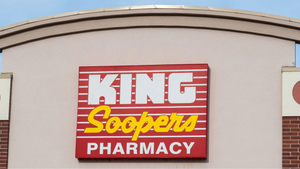PHARMACY PROFIT MARGIN IS SLIPPING: FMI REPORTPHARMACY PROFIT MARGIN IS SLIPPING: FMI REPORT
SAN FRANCISCO -- Supermarket pharmacies are growing in number and stature, but their reputation as a store profit center may be in jeopardy, according to a report released by the Food Marketing Institute.The number of supermarket pharmacies is expected to grow by 15% by the end of 1994, according to the survey, the results of which were announced at FMI's 7th annual Supermarket Pharmacy Conference
May 9, 1994
MICHAEL SLEZAK
SAN FRANCISCO -- Supermarket pharmacies are growing in number and stature, but their reputation as a store profit center may be in jeopardy, according to a report released by the Food Marketing Institute.
The number of supermarket pharmacies is expected to grow by 15% by the end of 1994, according to the survey, the results of which were announced at FMI's 7th annual Supermarket Pharmacy Conference held here last month.
The median gross profit margin for supermarket pharmacies, however, is slipping, having dipped from 29% in 1990 to 25% in 1993, FMI reported. The declining profitability of supermarket pharmacies can be attributed to ever-increasing demands from third-party plans and to increased competition from other classes of trade, such as mass merchants and mail order pharmacies, said Roger Fogle, pharmacy third-party manager for Kroger Co., Cincinnati, and the conference chair, who announced the findings of the report.
Survey respondents reflected these concerns in naming the top three challenges facing supermarket pharmacies. More than half of the respondents, 52%, said pressure on profit margins and profitability was one of their top three concerns. "This was caused, in part, by an increase in third-party prescription business and by the lowest reimbursement rates ever seen," said Fogle. The survey showed 56% of the respondents had hired an employee to serve as a third-party coordinator. To further emphasize the importance of third-party plans to pharmacy business, the survey showed a whopping 48% of prescription sales in food store pharmacies came from third-party plans, up 18% from 1990.
Pricing issues and staffing issues were tied for second with 38% of respondents ranking both among their top three concerns. Regulations resulting from the Omnibus Budget Reconciliation Act of 1990, competition from other channels of trade, promotions and health care reform followed.
The FMI survey was sent to 190 companies, and 95 responded, for a total representation of 3,998 pharmacies, Fogle said. Despite pharmacists concerns, the FMI study showed that from the middle 50% size range of retailers who responded, prescription sales represented 3% to 6.5% of total store sales.
"As the number of prescriptions dispensed per day increased," said Fogle, "the percentage of [pharmacy as] total store sales also tended to grow significantly."
The survey also showed the average supermarket pharmacy has weekly sales of $18,400 and the inventory turn in a mature store is nine times per year.
Twenty-five percent of respondents said they had the capability to warehouse their own prescription drugs, up from 20% in FMI's 1990 survey.
"In this survey, any retail companies with total annual revenues in excess of $100 million warehouse their own prescription drugs," Fogle said.
About the Author
You May Also Like




